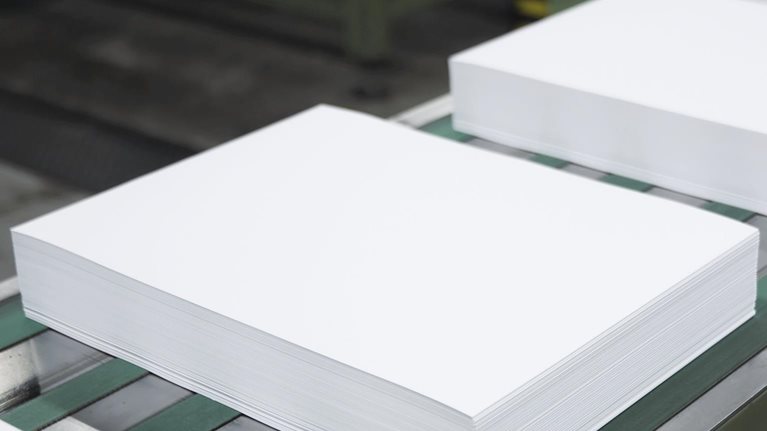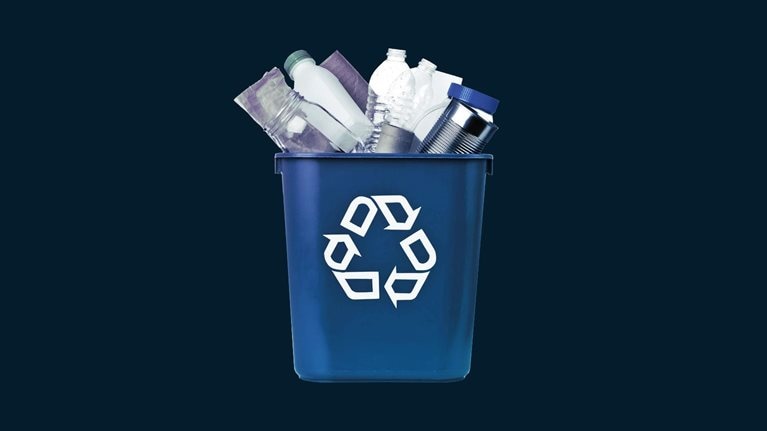The COVID-19 pandemic has rapidly transformed consumer behavior in several ways: sparking higher price sensitivity, accelerating online shopping across all categories, and causing shoppers to focus even more on health, wellness, and hygiene. Consumer attitudes about sustainable packaging have also changed significantly. Before the pandemic, public awareness that packaging can leak into the environment had increased a good deal. Fast-moving-consumer-goods (FMCG) companies and retailers were making big commitments to sustainable packaging, and regulatory bodies were moving decisively on the issue.
To understand how consumer thinking has evolved since then, we launched a survey in ten countries around the world to explore consumers’ attitudes toward sustainable packaging. Responses from the US consumers who took part in the survey have uncovered five key findings. First, consumers actually rank overall sustainability relatively low as a buying criterion among end-use factors; they regard price, quality, brand, and convenience as more important. Indeed, even when we look specifically at packaging, it seems that hygiene, shelf life, and convenience rank significantly higher than environmental impact. The pattern is similar in the other countries we surveyed.
Second, more than half of US consumers are nonetheless highly concerned about the environmental impact of packaging in general. They worry about a wide range of issues, not one single factor, such as marine litter. Third, consumers are willing to pay more for green, but they would also buy additional sustainably packaged products if more of them were available and they were better labeled. Fourth, if you ask consumers what they want to see going forward, they are almost equally interested in recyclable and recycled plastic packaging and in fiber-based substitutes. Fifth, the COVID-19 crisis has significantly heightened consumer sensitivity to hygiene and food safety, which are new strong preferences for packaging materials.
To respond to these changing consumer sentiments, the whole packaging value chain will have to adjust rapidly. Here we suggest three actions packaging converters can take immediately to jump-start their response. Above all, they should take a holistic approach to sustainability by acting in multiple areas and make sustainable packaging not only available but also apparent to consumers. A granular understanding of end-user segments will also be critical: there is no universal solution, and consumers do not necessarily know what to expect about sustainability in packaging. To be proactive, packaging converters should collaborate with their value-chain partners sooner rather than later, adopting an experimental approach to developing solutions and communicating narratives about them clearly. Finally, converters shouldn’t address sustainability in isolation, without taking into account COVID-19’s ramifications for hygiene and food safety, not to mention other megatrends, such as e-commerce.
Sustainability reemphasized and redefined
Over the past three years, the forces pushing for sustainability—especially demands from regulators—have strengthened around the world. FMCG companies and retailers have made bold commitments responding to public concerns about single-use packaging waste. More recently, the COVID-19 pandemic has further reshaped sustainability sentiment by heightening consumers’ concerns about hygiene and food safety.
What lies ahead for sustainability? We found some answers in our global survey. This paper is based not only on the responses from US consumers but also on interviews with executives at retailers and FMCG companies, as well as packaging-industry executives in major end-user markets and across the main packaging substrates.
When we asked US consumers about the most important factors influencing their purchasing behavior, they gave a relatively low rank to the environmental aspects of products and their packaging. Indeed, across all end-use areas we surveyed, price, quality, and brand rank well ahead of packaging or environmental concerns (Exhibit 1).

Looking deeper into what US consumers expect from product packaging, we found that hygiene and food safety, shelf life, and ease of use are the top-ranked factors. The environmental impact is actually one of the lowest of seven, after appearance and durability (Exhibit 2). Forty-three percent of surveyed US consumers cited environmental impact as extremely or very important for packaging, compared with 77 percent for hygiene and food safety, 67 percent for shelf life, and 61 percent for ease of use. The relatively low importance US consumers attribute to environmental factors is certainly not unique; we see similar sentiments in China, France, and the United Kingdom. In Japan, environmental factors are actually significantly less important than they are in the United States. However, they rank somewhat higher in Germany and Italy and significantly higher in Brazil, India, and Indonesia.

Sustainability concerns for end-use segments and packaging substrates
Nevertheless, 55 percent of US survey respondents report that they are extremely or very concerned about the environmental impact of product packaging, so consumers remain very focused on these issues. A deep dive into their concerns shows, significantly, that they are spread almost equally across several factors (Exhibit 3). Consumers rank marine litter and other factors (such as deforestation and natural-resource depletion) at similar levels, despite extensive reporting in the media about how packaging leaks into the environment. Since consumers don’t focus on any single area, companies acting on sustainability must address a broad range of concerns.

When we ask US consumers about the importance of sustainable packaging when they purchase products for various end-use areas, some 38 percent say it is extremely or very important. Moreover, the responses are quite consistent across different end-use segments. The level of concern is somewhat higher for dairy products and lowest for foodservice.
As for packaging substrates, some 57 to 60 percent of US consumers rank glass, paperboard, and paper as extremely or very sustainable. Interestingly, they rank these three only a little higher than compostable plastic films or fully recyclable plastic films and bottles: 53 to 57 percent of consumers see plastics as extremely or very sustainable. Metal containers rank a bit lower, at 48 percent, while aluminum foil and laminated packaging rank lowest, rated as extremely or very sustainable by only 37 percent and 32 percent of US consumers, respectively.
What do US consumers want going forward?
Many industry participants are asking themselves whether consumers will pay for green. Our survey on US consumers has three important findings here:
- Across all end-use segments, 60 to 70 percent of consumers said they would pay more for sustainable packaging. A willingness to pay more was relatively equally distributed across end-use segments.
- Fifty-two percent of consumers said they would buy more products with sustainable packaging if those products didn’t cost more than conventionally packaged ones.
- Approximately 35 to 36 percent of respondents would buy additional sustainably packaged products if they were more available in stores, available for more products, and better labeled (to indicate green packaging).
The last point is interesting because it indicates that price isn’t the only thing that drives volume; you must also ensure that consumers know they are buying more sustainable packaging and that sustainable choices are widely available across products and categories.
Our survey also assessed what kind of sustainable packaging US consumers expect to see more often. Preferences vary across the different end-use areas surveyed. Although not all consumers have strong specific preferences, a few common themes can guide players in the packaging value chain as they get to grips with consumer priorities:
- Consumers are more or less equally interested in recyclable and recycled plastic packaging and in fiber-based packaging. Their specific preferences depend on the end use.
- Overall, consumers want plastic film and rigid packaging to be recyclable or to include higher levels of recycled content.
- Consumers expect more compostable packaging to be introduced.
For example, in foodservice, consumers now see large amounts of paper-based containers and flexible paper. Going forward, they want plastic films or containers that are fully recyclable or films that are compostable (Exhibit 4). We can identify several similar trends in other food and nonfood segments:
- Produce (fresh fruit, vegetables, fresh meat). Consumers want more recyclable or compostable films and more paper- and board-based packaging.
- Beverages. The most important request is for plastic bottles that are more recyclable or entirely made from recycled content. In this segment, consumers also ask for more metal and glass packaging.
- Packaged dry food. This segment similarly has a high level of interest in both recyclable and recycled plastic packaging, as well as in fiber-based packaging.
- Dairy products. We found strong demand for plastic packaging (both flexible and rigid) that is either fully recyclable or compostable or includes recycled content.
- Frozen food. US consumers want plastics with more recycled content.
- Pet food. US consumers who have a preference want much more paper-based packaging.
- Household products. As with beverages, US consumers ask for plastic packaging with more recycled content and high recyclability. They also want more glass packaging.

Picking up on the consumer voice from the survey, we can map out the likely way ahead in the categories mentioned above. Expect some substrate shifts for selected end uses; for others, continue to use the same substrates but improve them incrementally so that your products have a better sustainability profile.
Substrate shifts will probably include a move to more compostable films or to fully recyclable monomaterial plastic films (for example, in foodservice and produce) and to more fiber-based products (in pet foods and in produce). The speed of this shift will probably depend on the industry’s ability to introduce compostable, recyclable, or fiber-based packaging with the performance profile of incumbent solutions and at competitive (or close to competitive) prices. Today, the main challenges are the performance of barriers and the price of packaging, so these issues could delay the shift to different or improved materials. That shift may happen first in product lines where performance or cost are not limiting factors.
Existing substrates could probably be incrementally improved and introduced more rapidly across most of the end-use areas surveyed—for example, a move to packaging with higher recycled content for frozen foods, dairy products, beverages, packaged foods, and household-cleaning products. Again, we would expect these changes to happen more quickly in product lines where they will have little or no impact on operating costs, capital expenditures, and functionality, or on the attractiveness of the packaging.
Another issue will also have an impact on future substrate choices: significantly heightened consumer sensitivity to hygiene and food safety. In our survey, 71 percent of US respondents said they are more concerned about them than they were before the pandemic. Consumers rank glass as the safest packaging substrate (33 percent). Most others (including plastic, metal, and paper) rank at around 22 to 26 percent. US consumers rank aluminum foil and laminated packaging as the least safe substrate. These concerns and consumer preferences for different packaging materials will probably be a major consideration when the industry selects substrates to buttress its sustainability efforts.
Three immediate actions
To align with evolving consumer behavior, the whole packaging value chain must quickly consider and act on a number of issues. We suggest three immediate ways for packaging converters to jump-start their response:
- Packaging converters must take a holistic approach to sustainability rather than focus on just one thing. The survey results show that consumers demand action across multiple environmental areas. When packaging players address them, it will be necessary to use clear labeling and more generally available options to help consumers see and understand the sustainability narrative. As our results show, consumers are willing not only to pay more for sustainable packaging but also to buy more products that use it if they are available and clearly labeled.
- A granular understanding of end-user segments will be critical. In some of them, consumers rank fiber packaging highest; in others, compostable plastic film. There is no universal solution, and in any case consumers do not necessarily know what to expect for sustainability in packaging. To act proactively, packaging players must understand, at a granular level, how consumers buy and use the products in a given category and how consumers dispose of the packaging now in use. These insights can serve as a starting point for an analysis of which kinds of sustainable packaging fit a given value chain and the range of improvement levers available. Companies will probably find it helpful to try sooner rather than later, taking an experimental approach to developing solutions with partners and then perfecting the packaging along the way. Attempts to second-guess consumer preferences in packaging-design labs probably increase the risk of market failure.
- Finally, sustainability needs to be redefined to include hygiene concerns. It will also be important to address other key megatrends, such as e-commerce. Packaging converters that can combine sustainability and hygiene with additional requirements (such as costs, performance, and convenience) are more likely to succeed than converters that focus on one or two factors.
Although sustainability remains a key industry-shaping trend, pre-COVID-19 approaches will not be enough to address it. An understanding of today’s consumer preferences gives packaging converters a unique opportunity to help downstream customers reshape their packaging portfolios, drive growth, and capture value.


